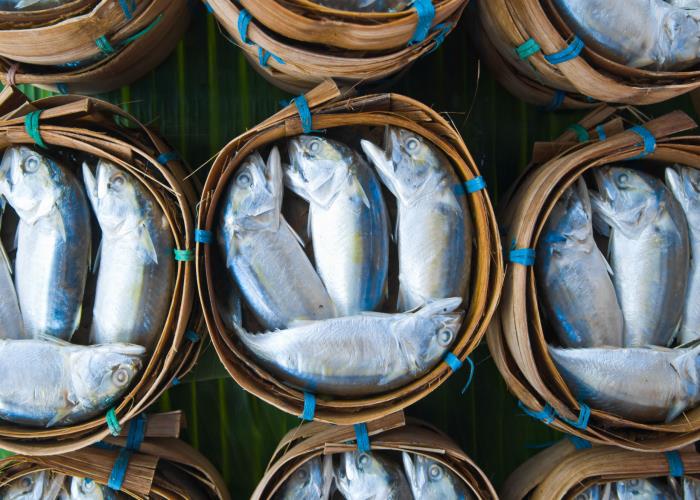Sustainable fish

What is a sustainable fish?
We all know the trouble with fish. We’re hardly surprised when we’re told that almost 90% of fish stocks are overfished and running out. Prawns from Thailand wreck the delicate ecosystems of the mangrove swamps. And if you eat cod, one of the most overfished species there is, you might as well just club a baby seal to death, while wearing a coat made from the three remaining Rwandan mountain gorillas. Not even that vast frozen food giant, Bird’s Eye, uses cod in their fish fingers anymore.
Tuna is out, too – supplies of blue and yellow fin tuna are so low they’re almost on the endangered list. Even skipjack tuna carries a stigma; when it is fished, the by-catch tends to be turtles and sharks, which are thrown back, dead, into the water. The same goes for some supplies of halibut; a lot of cod gets caught up during halibut fishing but seeing as there are laws about how much cod you can land these days, the by-catch goes back in the water to get scoffed by seagulls.
The British have been moved by the plight of the oceans; a Which? survey in May of this year found that 70% of supermarket customers either “always or sometimes” bought fish they were confident was from sustainable sources. The fact is that we don’t want a big dollop of guilt served up with our fish and chips and anyone who’s seen The End of the Line, the film detailing just how soon the seas may be empty of anything to batter and deep-fry, will be even more wary.
Fish we can eat
So which fish can we eat? Do we have to limit ourselves to bony river fish like trout and eels for evermore? Can we trust our supermarket, or our local fishmonger, to use the word 'sustainable' truthfully?
One way of making sure that you’re not contributing to the death of the oceans every time you make a fish pie is to look for the Marine Stewardship Council’s blue logo on packets of fish. They investigate the sustainability of fisheries and fishing companies and then award them the right to use their logo. There’s more information about which supermarkets and suppliers near you carry MSC-labelled fish here.
Mitch Tonks, the award-winning restaurateur and fishmonger, sympathises with consumer confusion. “It’s a very complex issue,” he says. “I think that a lot of consumers expect retailers to do a lot of the work for them and aren’t really looking for the MSC logo. My view is that it’s not really species-specific, it’s more about where you are.
“There are a lot of fisheries on the south coast that are brilliantly managed and you can be confident about the fish you buy from them. Having said that, the problem is so serious that you can’t say that any one species is absolutely 100% sustainable. And there are environmentalists who would argue that the MSC’s certification process is fraught with problems, but at the moment it is the only independent body investigating and certifying fisheries.
“Buying only certifiably sustainable fish means your choice is quite limited. On the south coast there are only two species that have been certified by the MSC as ‘sustainable’ and those are Dover Sole and mackerel. But there are other MSC-certified fisheries all over Europe, in Iceland for example, and people shouldn’t be afraid to buy frozen fish from places like that, as long as they’re MSC-certified.”
Also worth your attention:
The return of Cantabrian anchovies
Grey mullet with mussels, roasted garlic and oregano recipe
Comments
Be the first to comment
Do you want to comment on this article? You need to be signed in for this feature